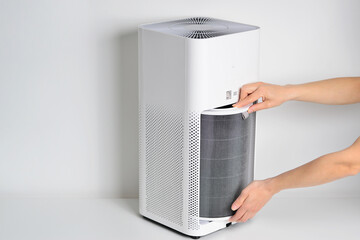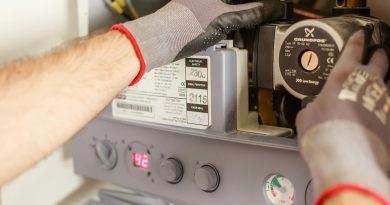What Is the Difference Between an Air Purifier and an Air Sanitizer?
As a homeowner, it is essential to be aware of the quality of the air you and your family are breathing in your home. Poor indoor air quality can have a range of negative health effects, including allergies, asthma, headaches, fatigue, and even diseases. While it may not be the first thing on your mind, it is important to take the necessary steps to ensure that your home’s indoor air is clean and healthy. Air purifiers and air sanitizers are two devices that are often used to address air quality issues, though many people don’t know what they are or how they work. If you want to know more, read on to find out what the difference is between an air purifier and an air sanitizer.
What is the difference between an air purifier and an air sanitizer?
Many people find themselves searching “air purifier vs air sanitizer” but the truth is they are both valuable tools for improving the quality of the air. An air purifier works by filtering out airborne particles, such as dust, pollen, pet dander, mold spores, and other allergens. The purifier typically consists of a fan that pulls contaminated air into the device where it passes through a series of filters to remove contaminants from the airstream before it is released. Some devices also contain activated carbon filters which absorb odors and chemical vapors from the environment.
Air sanitizers work differently than air purifiers in that they use ultraviolet light to kill harmful microorganisms like viruses, bacteria, and fungi in the atmosphere. These UV light rays cause changes within microorganisms’ DNA structure which kills them quickly without releasing additional pollutants or toxins into your living space. Air sanitizers can be used alongside an existing filtration system to lower levels of airborne pathogens as well as improve indoor health conditions. Both types of devices offer great benefits when it comes to improving indoor environmental quality.
Generally speaking, if you’re looking for something specifically designed to rid your home of problematic microbes then an air sanitizer may be more suitable while those seeking relief from allergies should opt for an effective filtration-based unit such as an ionic filter or HEPA filter-based machine, though it’s always best to take as many precautions as you can.
How else can you improve your home’s indoor air quality?
Now that you know how to use air purifiers and air sanitizers, let’s talk about some of the other ways you can improve your home’s air quality. For example, you should clean your home more frequently and use a vacuum with a HEPA filter, if possible. HEPA filters are specifically designed to trap and remove harmful particulate matter from the air, such as dust, pollen, and other common allergens. This type of filter can also help to reduce the amount of mold, bacteria, and other contaminants that can build up in your home over time.
Avoiding the use of products that contain VOCs (volatile organic compounds) is a good idea too. VOCs are a type of gas that is released from certain materials. Some common sources of VOCs include paints, lacquers, solvents, waxes, cleaning supplies, and adhesives. VOCs can cause a variety of health problems, including eye, nose, and throat irritation, headaches, nausea, and dizziness. When you can, use products that are low in VOCs or that have been certified by an independent organization as low emitting.
Overall, the differences between an air purifier and an air sanitizer are quite significant. An air purifier serves to remove pollutants from the air, while an air sanitizer works to eliminate airborne microorganisms. Both are critical for maintaining clean and healthy air, but for varied reasons. You have to understand the unique features of these two devices in order to choose the best one for your needs. You should also take other steps to improve your indoor air quality, like using a vacuum with a HEPA filter, cleaning often, and avoiding the use of VOCs. Follow the tips in this article so you can breathe easier whenever you’re at home.





Pingback: 5 Simple Tactics to Maintain your House.